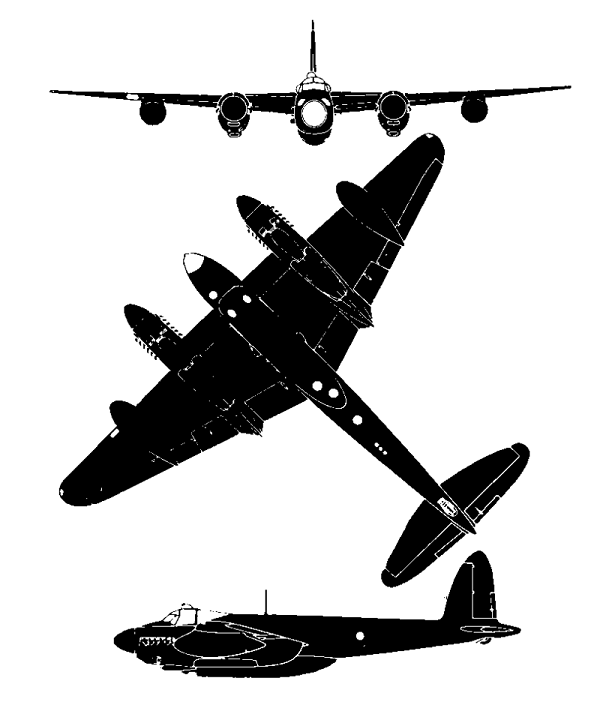
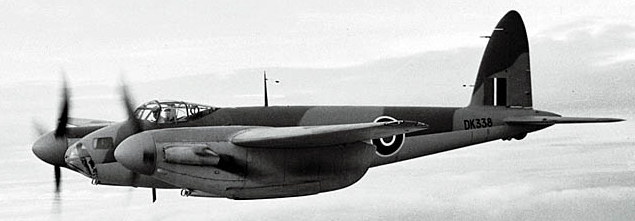
The de Havilland DH.98 Mosquito is a British twin-engine shoulder-winged multi-role combat aircraft, introduced during the Second World War, unusual in that its frame is constructed mostly of wood. It was nicknamed The Wooden Wonder, or "Mossie". Lord Beaverbrook, Minister of Aircraft Production, nicknamed it "Freeman's Folly", alluding to Air Chief Marshal Sir Wilfred Freeman, who defended Geoffrey de Havilland and his design concept against orders to scrap the project. In 1941 it was one of the fastest operational aircraft in the world.
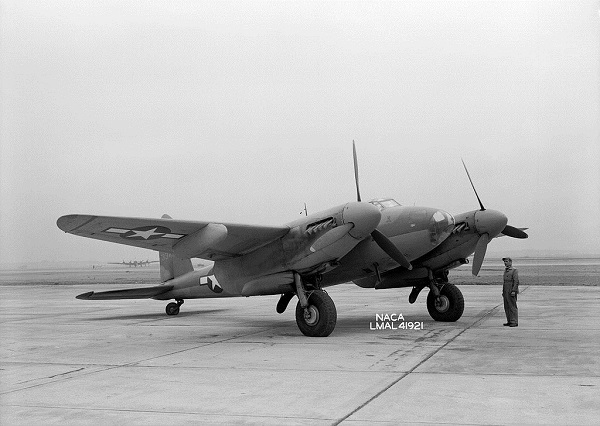
Originally conceived as an unarmed fast bomber, the Mosquito's use evolved during the war into many roles, including low to medium-altitude daytime tactical bomber, high-altitude night bomber, pathfinder, day or night fighter, fighter-bomber, intruder, maritime strike aircraft. It was also used by the British Overseas Airways Corporation (BOAC) as a fast transport to carry small, high-value cargoes to and from neutral countries through enemy-controlled airspace.[8] The crew of two, pilot and navigator, sat side by side. A single passenger could ride in the aircraft's bomb bay when necessary.
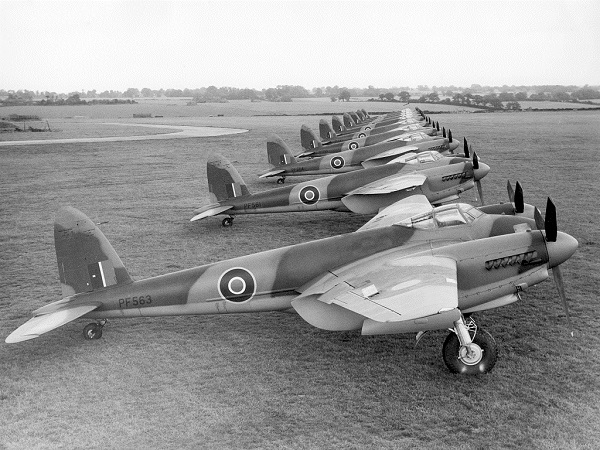
The Mosquito FBVI was often flown in special raids, such as Operation Jericho – an attack on Amiens Prison in early 1944, and precision attacks against military intelligence, security and police facilities (such as Gestapo headquarters). On the 10th anniversary of the Nazis' seizure of power in 1943, a morning Mosquito attack knocked out the main Berlin broadcasting station while Hermann Göring was speaking, putting his speech off the air.
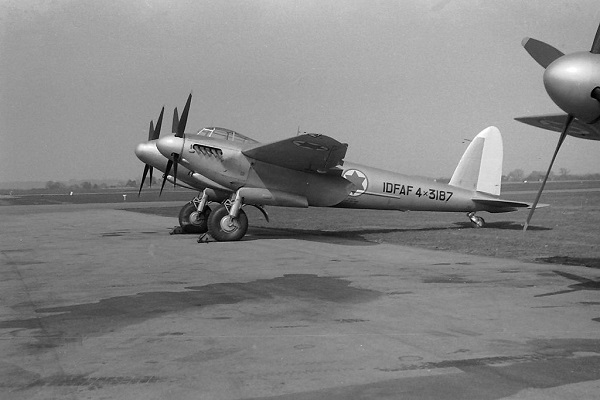
The Mosquito flew with the Royal Air Force (RAF) and other air forces in the European, Mediterranean and Italian theatres. The Mosquito was also operated by the RAF in the South East Asian theatre and by the Royal Australian Air Force (RAAF) based in the Halmaheras and Borneo during the Pacific War. During the 1950s, the RAF replaced the Mosquito with the jet-powered English Electric Canberra.
Read moreCrew: 2: pilot, bombardier/navigator
Length: 44 ft 6 in (13.56 m)
Wingspan: 54 ft 2 in (16.51 m)
Height: 17 ft 5 in (5.31 m)
Wing area: 454 sq ft (42.2 m2)
Airfoil: RAF 34 (modified)[202]
Empty weight: 14,300 lb (6,486 kg)
Gross weight: 18,100 lb (8,210 kg)
Max takeoff weight: 25,000 lb (11,340 kg)
Powerplant: 1 × Rolls-Royce Merlin 76 V-12 liquid-cooled piston engine, 1,710 hp (1,280 kW)
Powerplant: 1 × Rolls-Royce Merlin 77 V-12 liquid-cooled piston engine, 1,710 hp (1,280 kW) RHS fitted with a blower for cabin pressurisation
Propellers: 3-bladed constant-speed propellers
Maximum speed: 415 mph (668 km/h; 361 kn) at 28,000 ft (8,500 m)
Range: 1,300 mi (1,130 nmi; 2,092 km)
Service ceiling: 37,000 ft (11,000 m)
Rate of climb: 2,850 ft/min (14.5 m/s)
Wing loading: 39.9 lb/sq ft (195 kg/m2)
Power/mass: 0.189 hp/lb (0.311 kW/kg)
Bombs: 4,000 pounds (1,800 kg)
